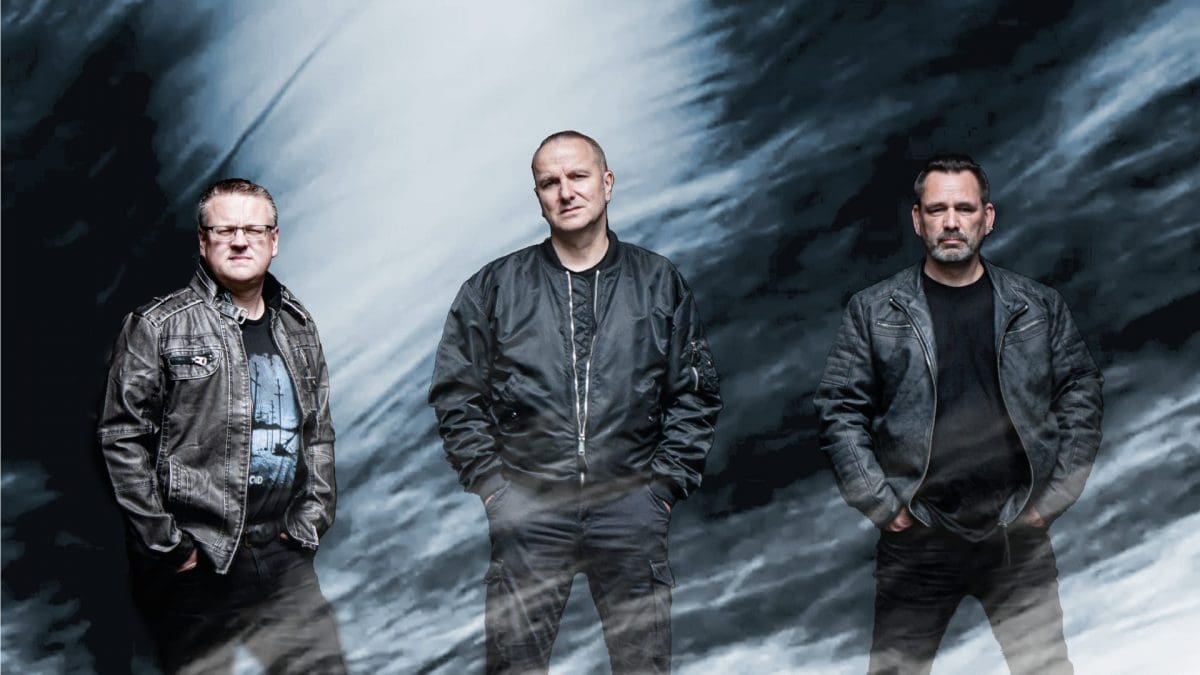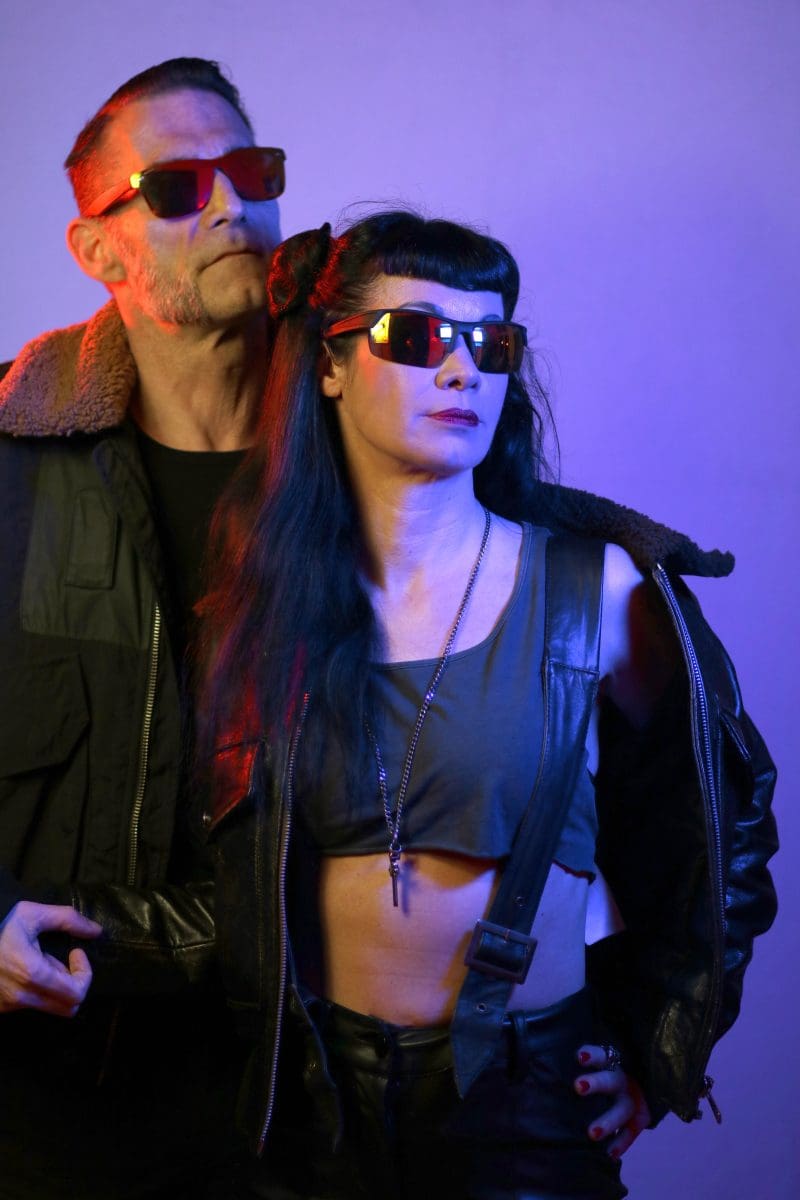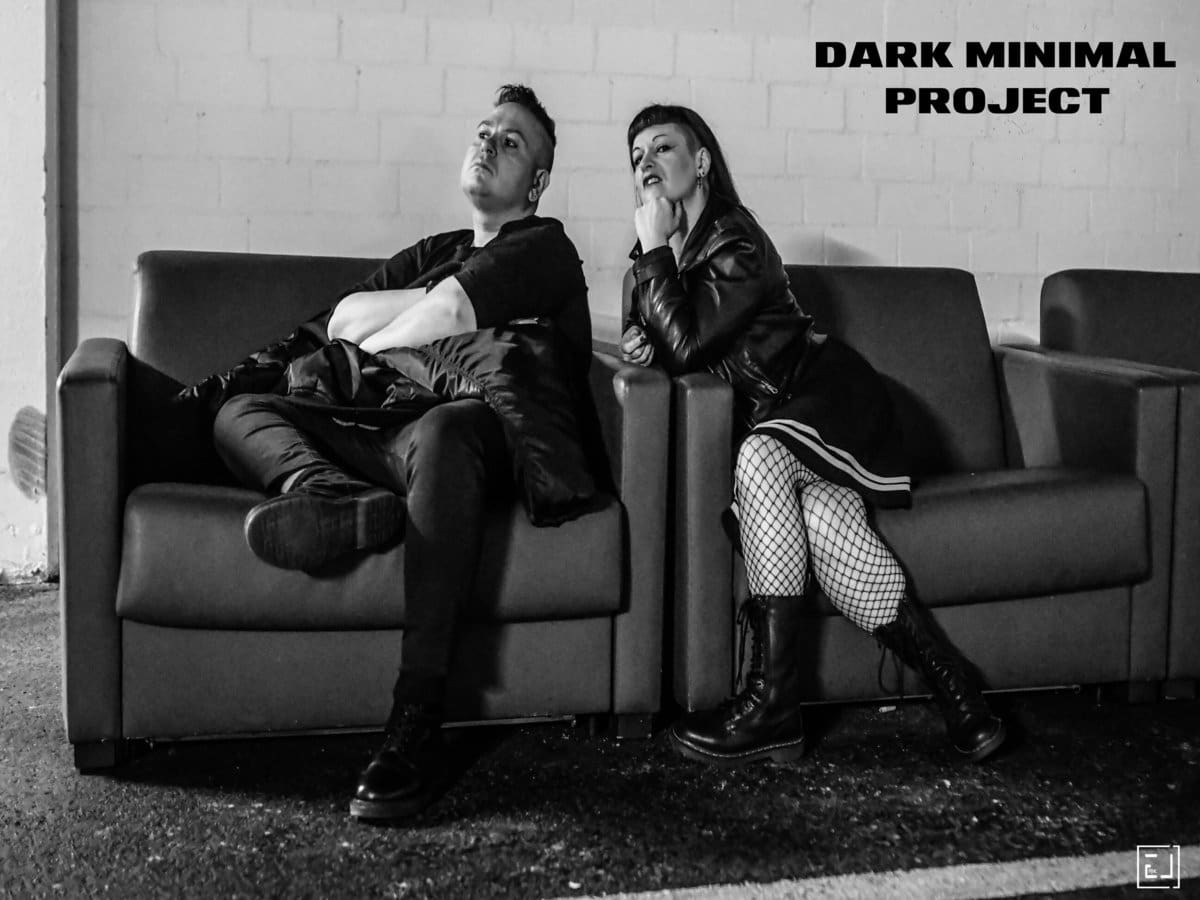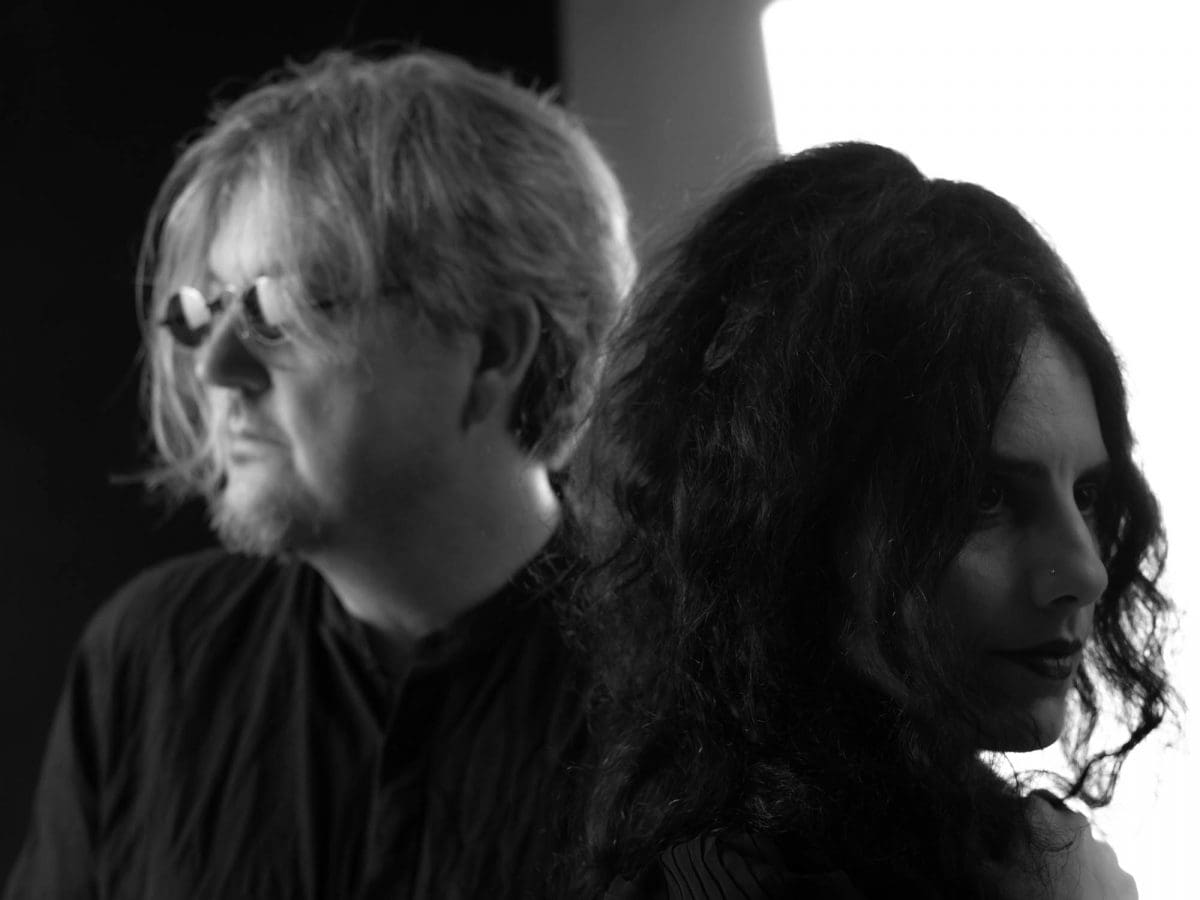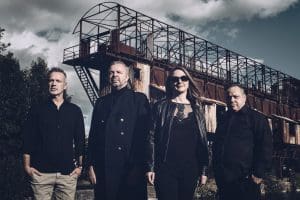Click Interview with BySenses: ‘Music Has To Be Able To Take You Along’
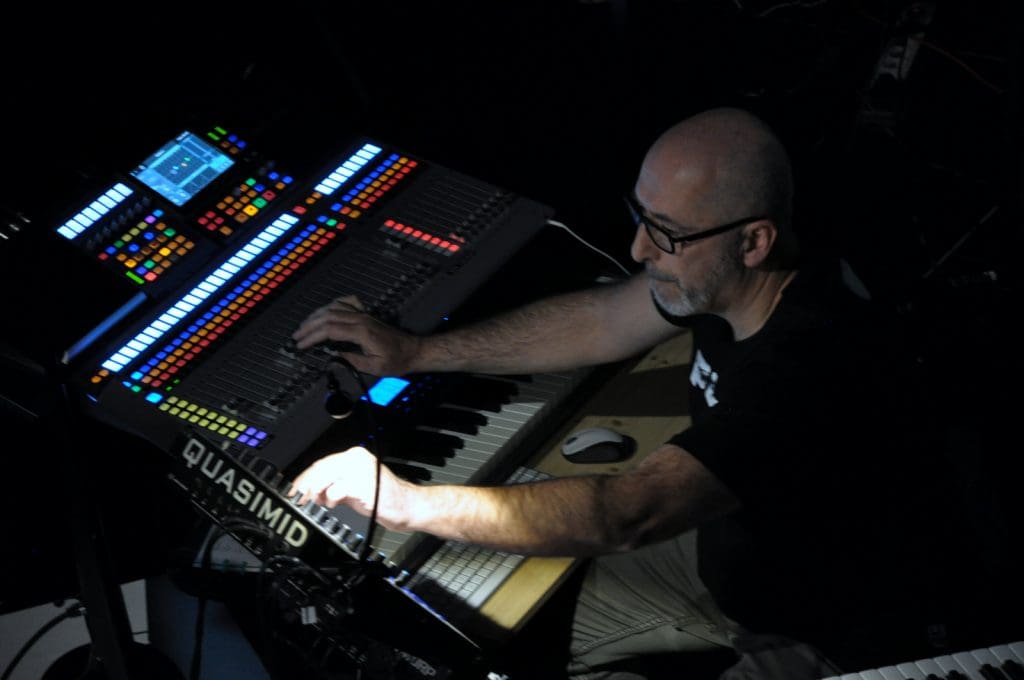
I already interviewed BySenses four years ago right after the release of the third album “People”. This Belgian solo-project driven by Didier Dewachtere took me by surprise dealing with an intelligent Electro-Ambient style which is clearly inspired by the ‘Berliner School’. The artist this year self-released his fifth opus “MonoCHROOM” on which he confirmed to have a talent for sophisticated Ambient music. This is an album appealing for fans of Tangerine Dream but more than simply an emulation BySenses is a project with an own approach and a fascinating sound.
(Courtesy by Inferno Sound Diaries)
Q: Tell us a bit more about your musical background and roots? How did you finally come to set up BySenses?
Didier:As a little boy, at home I was mainly brought into contact with French chansons, Charles Aznavour or American artists, such as Nat King Cole, Dean Martin or Orchestral melodic music. The time on the radio is still in my head today, and yes, I did like that. As a child, you develop naturally and you end up in your own world. A world of New-Wave, Front 242, The Neon Judgement, Simple Minds etc… New-Wave pubs were the place where a lot of my music started. In Ghent, there was no shortage of such nice bars either, The Fifty Five for instance.
At one point I heard the opening tune “Equinoxe 5” by Jean-Michel Jarre on the “Musique de France” broadcast on the radio, presented by Zaki, father of, father of the Soulwax-brothers. It was a bit of a surprise, because the opening tune really didn’t match the French chansons that were presented, but it was a start. “Equinoxe 5” did catch my attention. I went looking for that music and finally bought the single. Later, the LP-version was added, so my parents were obliged to buy me a record player. But actually, my first distant contact with Electronic music was at the Bargee’s institute in Wetteren, where the catholic brother played Vangelis’ music at night, while the lights were off… very special, but I think that has stuck. He then played “To The Unknown Man”. It was only when I bought “Spiral” that I recognized it.
In Sluis (Holland) I came across an album with a purple background and a big X sign. I didn’t know what and who it was, but I had the album played on the turntable in that shop. I was overwhelmed. After a long time of sawing, my parents let me buy it… and then the purchase of many albums by Klaus Schulze.
Also the album “Live” came up and if it would just happen that the song “Sense” is on it and that’s how I came to the name BySenses. I thought it was a nice pun on one of my great examples
Q: Your work is clearly inspired by Ambient music. Does this label fit with what you’re doing and what means Ambient music to you?
Didier: I can imagine that people place my music in that genre. Just putting together different sounds, looking for a setting, atmosphere is very important to me. Music has to be able to take you along, whether it’s Rock, Jazz, Hard-Rock or House or Classical music, if it takes you along, I think you’re on the right track.
You can’t compare Klaus Schulze’s music with VANGELIS’ music. These are two different environments, two different atmospheres, two different worlds. Where Vangelis mainly feeds on his fantastic melodies, Klaus Schulze feeds more on his Soundscapes, composer of different tones, sounds. I find that an incredible thing. Am I influenced by it, certainly, and that’s no problem, they will have been influenced by other artists as well. “Le Grand Petit”, from the digital album “5 Jours De Liberté” tends much more towards the melodic, while on the same album there are pieces where I try to create an atmosphere with pure sounds. It’s the same on “MonoCHROOM”. The album “People” tends more towards sequencer work and more Techno-like rhythms.
Q: You already mentioned Klaus Schulze and Vangelis who both passed away quite recently. You already talked about it but in which way do you feel connected with their work and what made both artists and their work that special?
Didier: It is indeed terrible, Electronic music is losing its founding fathers. Let’s not forget Edgar Froese of Tangerine Dream.
Both are absolute founding fathers of Electronic music, each in their style the synthesizer was used in a totally different way.
Klaus Schulze in his own style took me into his environment, the build-up, his build-down, his sounds… “Dune” is the biggest example for me, a song that carries me away in all its facets. I feel the same way about Brian Eno’s “Dune”-melody. If you play Frank Herbert from the album “X”, you get sucked into his own way of sequencing. Tangerine Dream on “Rubicon” or “Stratosfear” and “Ricochet” give me that same feeling.
Vangelis, also in his own style, takes me into his melodic music. He manages to play every note in the right way, less experimental, more in the sense of ‘ Here I am, here I present you something to accompany me in my journey through this album’. For a man who hasn’t learned a note and wins an Oscar… hats off. “To The Unknown Man” is a great example of how he manages to change the melody in one song.
To me, both are pioneers of the highest level, both can be placed next to great composers such as Mozart, Beethoven…
Q: Over now to your own work and the newest opus “MonoCHROOM”. How did this work took shape and what kind of album did you want to achieve?
Didier: “MonoCHROOM” has a small history. When I was at boarding school in Wetteren, an educator told me: ‘There are people who only like one colour. White or black’. He gave it a name. I had forgotten that name and actually spent a long time looking for it. A friend of mine, I think it was Johan Depaepe from Owann, my friend in “The Tower Tree”, told me that it might be that word. “MonoCHROOM” was born.
At first I had in mind to make pieces that were separate from each other again, but more and more the album grew into one big whole. Had I been able to make one 60-minute song, I might have done so. But I still wanted to see the differences between black and white and other colors. That’s why the cover is black and white and the inside is colored balls of different sizes (an idea of Alain Wymeels of Midician by the way).
When the album was OK for me… the music goes to the mastering man, Dries De Vreeze. A man who regularly puts me in my place, in the positive sense of course… but he gives it an extra dimension through his mixing and mastering. I can only be grateful to him for the additions he makes.
I wanted to release an album that pushed the monotony aside, and made it like a multi-color festival. There is more than one color in your life, and when you open the book (the CD cover), you see the diversity. It’s the same in everyday life.
Q: Your albums are always composed around a theme or should I say conceptual theme, which is not that different for “MonoCHROOM”. Does the theme and/or concept become the main inspiration to compose your music or how does it happen? And how do you transpose ideas/concepts into notes and songs?
Didier: I like to talk about one subject, because that is what I can focus on best. I then try to further develop the project, the idea. Maybe in the future I will try to make a story CD, spread over several CDs.
In “Monos” (cf. the first track), I wanted to bring out the monotony of color by working very hard on a light build-up, repetitive song, which eventually ends in an uptempo. The Industrial beginning points to how hard it must be to enjoy only one color. “Monos” means one color.
“Chroom” means more colors, which makes me start more rhythmically. I also wanted to add another instrument. I had seen Peter Moorkens playing his experimental guitar solos when we were in Ghent for the Sonic Emissions concert. At the Antenna Festival in Evergem I saw him working on his modular systems and thought, maybe we should do something together. Peter immediately liked the idea of playing guitar on “Chroom”. Because of this mixture, I think that the diversity has come out well.
Most of the ideas grow bit by bit. The melody lines are sometimes done in one night. The rhythmic piece on “Monos”, the solo, was recorded in one take. I like that. You’re in the zone, and … then it comes anyway…
Q: What did you try to express by live performances and how do you transpose the songs on stage?
Didier:I try to draw people into the story. Since live performances are a bit monotonous for EM musicians, we usually bring in some film, so that the movements are more pleasant than watching one person behind a battery of synthesizers. I find film very important in EM. Once I asked Johan De Paepe (Owann) at the concert in Ghent, Sonic Emission 1, when “People” came out, to take pictures of the people who were there. These were then incorporated into the film, directly, and put on the screen. That clicked well, because the CD “People” had just come out and you’re bringing people live. You can imagine that the people who suddenly saw their faces on the screen were shocked, and they liked that. Involving the audience, I find that very important.
I also try to adapt the songs, so that we don’t get the feeling that we are playing a play button. It goes without saying that I can’t manipulate all synthesizers with two hands. Some sequencers and samples are recorded beforehand… the PC is therefore the replacement of the old tape recorders that used to be on stage during live performances.
On Youtube, a 45-minute film called “45 Minutes De Liberté” is circulating, a precursor to the digital CD 5 “Jours De liberté”. There you can also see a film during my concert.
I am very happy when people say to me after the concert, ‘we enjoyed it’. I think that is the intention of all artists.
Since you’re here …
… we have a small favour to ask. More people are reading Side-Line Magazine than ever but advertising revenues across the media are falling fast. Unlike many news organisations, we haven’t put up a paywall – we want to keep our journalism as open as we can - and we refuse to add annoying advertising. So you can see why we need to ask for your help.
Side-Line’s independent journalism takes a lot of time, money and hard work to produce. But we do it because we want to push the artists we like and who are equally fighting to survive.
If everyone who reads our reporting, who likes it, helps fund it, our future would be much more secure. For as little as 5 US$, you can support Side-Line Magazine – and it only takes a minute. Thank you.
The donations are safely powered by Paypal.


